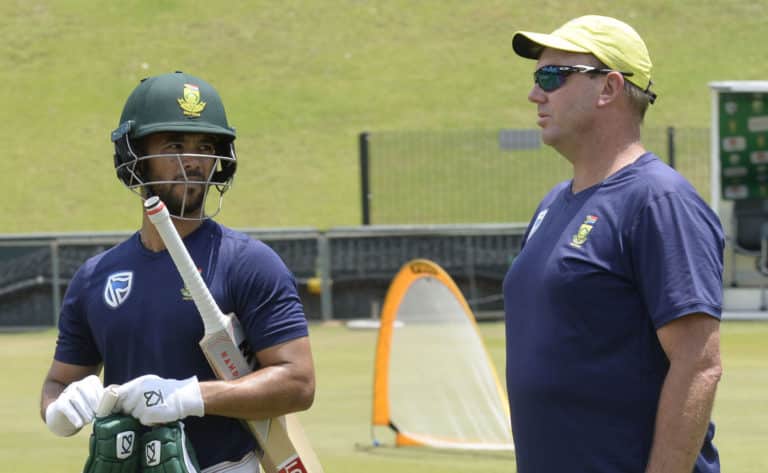The Proteas were thumped 5-1 in the ODI series and still show no evidence of having an active game plan.
The recent results are unacceptable. South Africa allowed India to walk all over them, helping them create history by gifting them their first ever ODI series victory in South Africa.
They continued this form into the first T20I, losing by 28 runs.
Are the Proteas learning from the little things that India have done right? Or are they blinded by thinking that their strategy is still correct?
We heard comments from Ottis Gibson, JP Duminy, Faf du Plessis, Aiden Markram, Hashim Amla and Dale Benkenstein, all repeating the same hogwash: ‘We need to execute our game plans better.’
Obviously, our batsmen need the right game plan. Their timing and ability to read spin is horrendous. Throughout the ODI series, the Proteas batsmen have looked to clear the boundary. Senior players have all fallen victim to India’s spinners by playing unnecessarily expansive shots.
Thirty-three wickets were taken by India’s spinners and 26 of them included a victim from the Proteas’ top eight.
The excuse was that not many of the Proteas players have played against the likes of Kuldeep Yadav and Yuzvendra Chahal, yet it was the experienced players who fell victim to their tactics.
Despite having faced these spinners in the IPL, Quinton de Kock, David Miller and Duminy were all removed by Chahal twice, while AB de Villiers and Chris Morris were both dismissed by the wrist-spinner once.
Yadav was equally effective as his spin partner, dismissing Duminy and Miller twice, and Morris three times.
That’s 15 out of the 26 wickets that came from dismissing players who have faced these two wrist-spinners before. This is largely down to the Proteas’ batting coach.
‘Even against spin, we need to look to score.’ said Benkenstein after the second ODI. ‘There were a few balls where guys were looking to score and hit straight to fielders. I’d much rather have them playing that way than being too scared to hit the ball.’
An attacking game plan sounds fantastic if we had players who were in form, but expecting players in slumps to smash unfamiliar turning delivers out the park is naive.
Duminy mentioned the form of his fellow batting partners in the post-match press conference of the Proteas’ 28-run defeat in the first T20I at the Wanderers.
‘You are going to go through periods in your career where you go through slumps, be it as a senior player or a new player. Unfortunately, throughout the series, quite a few senior players have come up short. Including myself, it’s been a dismal ODI series.’
ALSO READ: Duminy: Senior batsmen in slumps
The logical cure to these ‘slumps’ would be to go back to basics and learn from India. Batsmen should keep their eyes on the ball, follow the spin, play the ball late and most importantly, keep the ball grounded.
Heinrich Klaasen (43 and 39) in the ODIs and Reeza Hendricks (70) in the T20I, proved that a simple approach works. They refrained from playing any overly expansive shots until they were fully settled at the crease.
If they can keep up their performances, it will make it very difficult for selectors to ignore them for the 2019 World Cup. Miller and Duminy’s positions, however, are certainly not set in stone and they will need to use the T20Is to fight for their spots.
ALSO READ: Five lessons from ODI series
Photo: Lee Warren/Gallo Images




